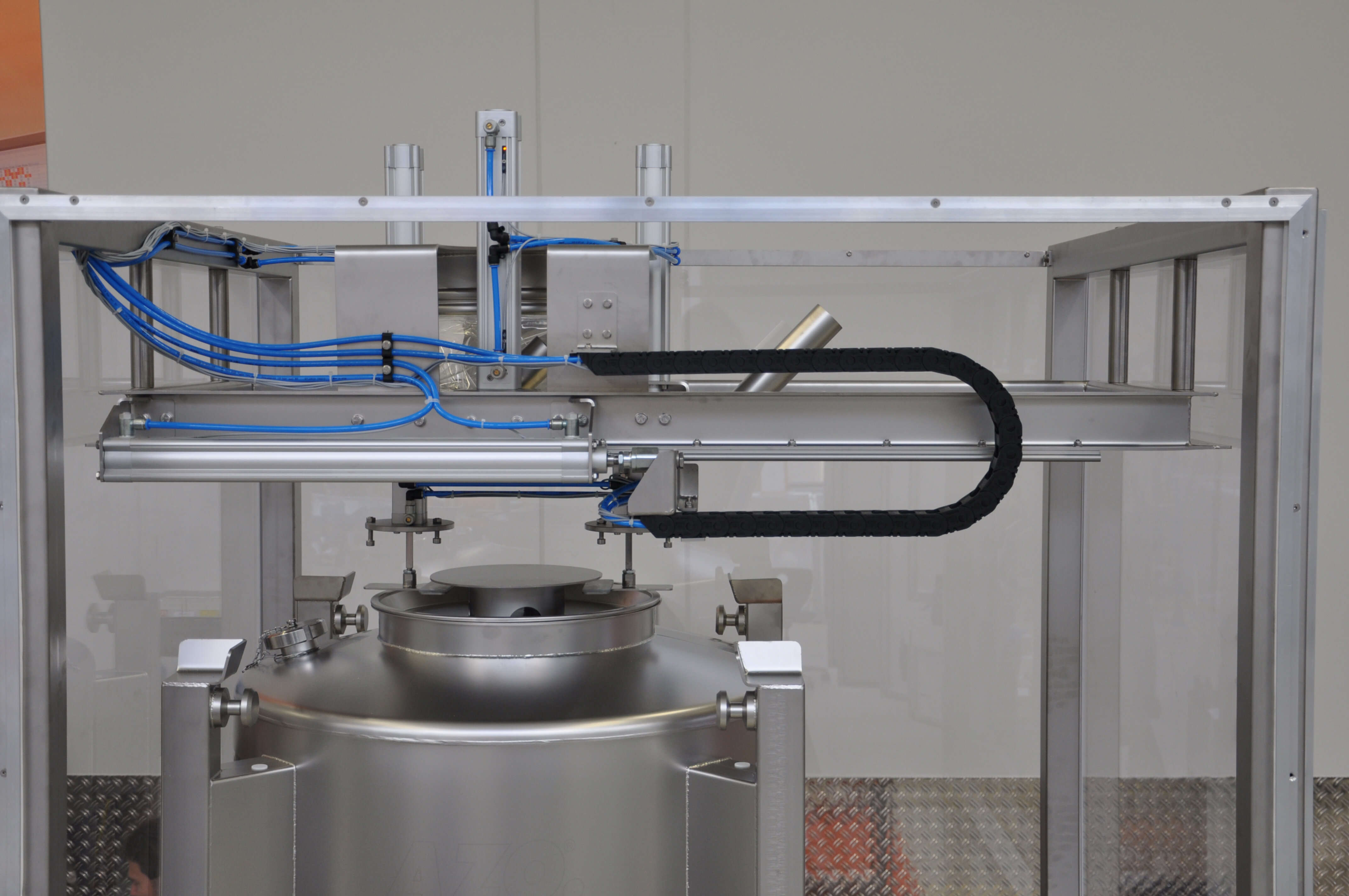
The system is used for docking dosing units in order to fill bulk solids containers. A flexible, dust-tight connection is created between the container (scale) and dosing unit without a measurable force bypass between the two components. The system has a highly efficient decoupling mechanism between the dosing unit and the scale. The bulk solids containers are sealed with a lid when being transported by means of a roller or chain conveyor. Removal of the lid prior to dosing, and its replacement immediately on completion of dosing, takes place at the location and dosing station itself.
This stops products that produce a lot of dust from subsequent "smoking" out of the container during onward transport. It also prevents contamination with foreign matter during normal operation.
Above all in linear systems such as AZO COMPONENTER® and AZO ShuttleDos®, the containers to be filled are transported to the individual dosing stations at which the specified quantities of product are weighed in. After positioning the container beneath a dosing unit, the container lid is removed automatically and moved to one side. The docking plate is then lowered onto the container, forming a dust-tight connection between the dosing unit and the container. The use of a flexible connection here ensures highly efficient decoupling between the dosing unit and the scale and prevents force bypass. When dosing is completed, the docking plate is raised from the container again and the container lid is replaced. A trickle guard slider prevents further trickling of the product. Aspiration of the residual material removes accumulations of product from the trickle guard slider. This has major advantages for the cleanliness of the system and has a positive impact in terms of hygiene requirements during production.
The closed container can then be transported to the next dosing station without the risk of product dust escaping or foreign matter entering the interior of the container.